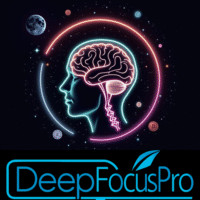AI Powered Productivity: How to Let Technology Work for You 2026
Okay, here’s a more human sounding version of that text:
Life’s hectic! You’re probably swamped every day emails, meetings, presentations, data… it’s a lot to handle. It’s easy to feel stressed and hard to concentrate on what’s important because of that overload. That is why there is digital productivity tools with AI. They can take care of basic repetitive process , help you do things more efficiently, and clear your head for bigger, creative ideas.
This guide gives you some simple tricks to use AI and change how you work, get back some free time, and do more, but work less. It doesn’t matter if you are an expert or just getting started, you’ll find easy ways to make tech work for you.
Understanding AI Powered Productivity

AI helping you get more done isn’t about robots taking over your job. It’s about tools that make you better at what you do. These tools learn how you work, take care of boring stuff automatically, and give you smart help that changes as you need it. The idea is easy: let the tech deal with the everyday stuff, so you can spend your time on what really matters.
The Modern Productivity Challenge
Today’s professionals face unprecedented challenges:
- Information overload from multiple digital channels
- Constant context switching between tasks and applications
- Administrative busywork that consumes valuable time
- Difficulty prioritizing in an always-on work environment
- Balancing deep work with communication demands
How AI Changes the Game
AI helps with these problems by:
- Taking over boring, repetitive stuff that doesn’t need a human touch.
- Offering smart help that gets to know what you like.
- Organizing info, so your brain doesn’t get overloaded.
- Making your schedule better based on how you work.
- Making people better at what they do, not getting rid of them.
AI isn’t about replacing people. It’s about dealing with the boring stuff so we can focus on being more human creative, caring, and able to think ahead.
Cal Newport, Author of Deep Work
Essential AI Productivity Tools by Category
The AI productivity landscape offers solutions for virtually every aspect of your workflow. Let’s explore the most impactful categories and tools that can transform how you work.
Task and Project Management

AI powered task management tools go beyond simple to do lists by intelligently organizing your work, suggesting priorities, and even automating task scheduling.
Motion
Motion uses AI to automatically schedule tasks on your calendar based on priorities and deadlines. It reschedules work intelligently when meetings or unexpected priorities arise.
Key features:
- Auto scheduling tasks based on priority
- Calendar integration with work and personal accounts
- Team collaboration with capacity planning
- Automatic rescheduling when plans change
Free Trial Available
Notion AI
Notion combines traditional project management with AI capabilities that help organize information, generate content, and answer questions about your workspace.
Key features:
- AI-powered workspace search and organization
- Content generation for meeting notes and summaries
- Q&A capabilities based on your workspace data
- Custom templates with AI enhancement
Free Plan Available
Ready to transform your task management?
Try Motion’s AI powered scheduling to automatically organize your day based on priorities.Start Free Trial
AI Writing Assistants

Writing assistants powered by AI help you draft emails, create content, and polish your writing saving hours of time while improving quality.
Grammarly
Beyond basic spell checking, Grammarly’s AI analyzes tone, clarity, and engagement to help you communicate more effectively across all platforms.
Key features:
- Advanced grammar and style suggestions
- Tone detection and adjustment
- Engagement and clarity improvements
- Browser extension for writing anywhere
Free Plan Available
ChatGPT
OpenAI’s ChatGPT helps with drafting emails, generating creative content, summarizing information, and providing research assistance.
Key features:
- Versatile text generation for various purposes
- Ability to understand context and follow instructions
- Code generation and problem solving
- Document analysis and summarization
Free Plan Available
Meeting and Transcription Assistants

AI meeting assistants capture, transcribe, and summarize conversations, ensuring you never miss important details or action items.
Otter.ai
Otter records and transcribes meetings in real time, creating searchable notes with speaker identification and key highlights.
Key features:
- Real-time transcription with speaker identification
- Automated meeting summaries and highlights
- Searchable meeting repository
- Integration with Zoom, Google Meet, and Microsoft Teams
Free Plan Available
Fireflies.ai
Fireflies joins your meetings, records conversations, and creates searchable transcripts with AI-powered insights and action items.
Key features:
- Automated meeting notes and transcription
- AI-powered topic and keyword tracking
- Searchable conversation library
- Integration with major video conferencing platforms
Free Plan Available
AI Research and Information Processing

Research assistants help you process large volumes of information, extract key insights, and connect dots across multiple sources.
Perplexity
Perplexity combines AI with web search to provide accurate, sourced answers to complex questions while citing references.
Key features:
- AI powered search with cited sources
- Conversational follow up capabilities
- Fact checking and verification
- Academic and professional research assistance
Free Plan Available
Humata
Humata allows you to chat with your documents, extracting insights from PDFs, reports, and research papers without reading them entirely.
Key features:
- Document analysis and summarization
- Question answering based on document content
- Comparison between multiple documents
- Citation of specific sections in responses
Free Plan Available
Enhance your research capabilities
Try Perplexity to get AI powered answers with cited sources for your most complex questions.Explore Perplexity
AI Calendar and Scheduling

AI scheduling tools optimize your calendar, protect focus time, and make meeting coordination effortless.
Reclaim.ai
Reclaim automatically schedules your tasks, habits, and meetings while protecting time for focused work and personal activities.
Key features:
- Smart scheduling of tasks and habits
- Automatic rescheduling when priorities change
- Protection of focus time and work-life balance
- Integration with Google Calendar
Free Plan Available
Clockwise
Clockwise optimizes your team’s calendar to create more focus time, reduce meeting fragmentation, and improve overall productivity.
Key features:
- AI-powered calendar optimization
- Focus time protection and creation
- Team scheduling coordination
- Meeting time suggestions based on availability
Free Plan Available
Email Management

Email assistants help tame your inbox by prioritizing messages, suggesting responses, and automating follow ups.
Shortwave
Shortwave transforms your Gmail experience with AI powered organization, summaries, and smart reply suggestions.
Key features:
- AI email summarization and categorization
- Smart reply suggestions
- Thread bundling and organization
- Scheduled send and reminders
Free Plan Available
Superhuman
Superhuman combines speed, AI-powered features, and keyboard shortcuts to help you achieve inbox zero in record time.
Key features:
- AI triage and prioritization
- Split inbox for better organization
- Follow up reminders
- Keyboard centric workflow
Premium Tool
Implementing AI in Your Daily Workflow

Knowing about AI tools is one thing effectively integrating them into your workflow is another. Here’s how to implement AI powered productivity in a way that truly transforms your workday.
Start With Your Biggest Pain Points
Begin your AI productivity journey by identifying your most significant workflow challenges:
If you struggle with:
- Email overload → Try an AI email assistant
- Meeting fatigue → Implement an AI transcription tool
- Writing blocks → Adopt an AI writing assistant
- Calendar chaos → Use an AI scheduling tool
- Information overload → Leverage an AI research assistant
Pro Tip: Don’t try to implement everything at once. Start with one AI tool that addresses your biggest pain point, master it, then gradually add more tools to your workflow.
Create AI Enhanced Workflows
The real power of AI-powered productivity comes from connecting tools to create seamless workflows:
| Workflow | AI Tools Combination | Process | Time Saved |
| Meeting Mastery | Otter.ai + Notion AI | Otter transcribes meeting → Notion AI summarizes and extracts action items | 1-2 hours/week |
| Content Creation | ChatGPT + Grammarly | ChatGPT drafts content → Grammarly refines and polishes | 3-5 hours/week |
| Research Acceleration | Perplexity + Humata | Perplexity gathers sources → Humata analyzes specific documents | 4-6 hours/week |
| Calendar Optimization | Motion + Reclaim.ai | Reclaim blocks focus time → Motion schedules specific tasks | 2-3 hours/week |
| Email Management | Shortwave + ChatGPT | Shortwave organizes inbox → ChatGPT helps draft responses | 3-4 hours/week |
Practical Implementation Steps
- Audit your current workflowTrack how you spend your time for one week to identify repetitive tasks and bottlenecks.
- Select one AI tool to startChoose a tool that addresses your biggest pain point and offers a free trial.
- Dedicate learning timeSet aside 30-60 minutes to learn the tool’s features and customize it to your needs.
- Create standard operating proceduresDocument how you’ll use the AI tool in your workflow for consistency.
- Measure the impactTrack time saved and quality improvements to quantify the tool’s value.
- Gradually expand your AI toolkitOnce you’ve mastered one tool, add another that complements your workflow.
Real World Examples: AI Productivity in Action

See how professionals across different fields are leveraging AI powered productivity to transform their work:
Marketing Director

AI Tools Used: ChatGPT, Jasper, Grammarly
Workflow: Uses AI to draft social media content, analyze campaign performance, and generate marketing copy saving 15+ hours weekly.
Key Benefit: Content creation time reduced by 60%, allowing more focus on strategy.
Executive Assistant

AI Tools Used: Motion, Otter.ai, Superhuman
Workflow: Leverages AI to manage executive calendars, transcribe meetings, and prioritize communications—handling work that previously required two assistants.
Key Benefit: Increased capacity to support multiple executives simultaneously.
Researcher

AI Tools Used: Perplexity, Humata, Notion AI
Workflow: Uses AI to scan research papers, summarize findings, and identify connections between studies ccelerating literature reviews by 4x.
Key Benefit: Discovers connections between research that would be missed manually.
“I was spending 15+ hours weekly just on email management and meeting notes. With AI tools, I’ve cut that down to 4 hours, giving me back more than a day each week for strategic work.”
Sarah Chen, Product Manager
Ready to achieve similar results?
Start with ChatGPT to experience how AI can enhance your productivity across multiple tasks.Try ChatGPT Free
Best Practices for AI-Enhanced Productivity

To get the most from AI productivity tools while maintaining quality and control, follow these best practices:
Maintaining Human Oversight
While AI can dramatically boost productivity, human judgment remains essential:
- Verify AI outputs before using them in important contexts
- Provide clear instructions to get better results from AI tools
- Understand AI limitations in nuance, context, and creativity
- Use AI as a first draft, not the final product
- Maintain your core skills even as you leverage AI assistance
Important: AI tools can occasionally produce incorrect information or “hallucinate” facts. Always verify critical information, especially for client-facing work or important decisions.
Balancing Automation and Personalization
Finding the right balance between efficiency and authenticity is crucial:
When to Automate
- Routine communications and responses
- Data analysis and pattern recognition
- Initial drafts and outlines
- Meeting transcription and summarization
- Calendar management and scheduling
When to Stay Hands On
- High-stakes communications
- Creative ideation and strategy
- Sensitive feedback and discussions
- Final review of important deliverables
- Building genuine relationships
Continuous Learning and Adaptation
The AI productivity landscape evolves rapidly. Stay effective by:
- Following AI productivity blogs and newsletters
- Joining communities where users share prompts and workflows
- Regularly testing new tools and features
- Refining your prompts and instructions over time
- Documenting what works best for your specific needs
Prompt Engineering Tip: The quality of your instructions dramatically affects AI output. Be specific about format, tone, audience, and purpose when prompting AI tools. For example, instead of asking “Write me an email,” try “Write a professional follow up email to a potential client who requested pricing information, emphasizing our value proposition and suggesting a demo call next week.”
Addressing Common Concerns About AI Productivity

As you implement AI-powered productivity tools, you may encounter concerns about dependency, privacy, and skill atrophy. Here’s how to address these valid considerations:
AI Dependency Concerns
Will I become too dependent on AI tools?
This is a legitimate concern. To maintain a healthy relationship with AI:
- Use AI as an enhancer, not a replacement for core skills
- Regularly practice skills without AI assistance
- Have backup workflows for when AI tools are unavailable
- Focus AI use on tasks that don’t develop critical thinking
Will AI make my skills obsolete?
Rather than making skills obsolete, AI shifts which skills are most valuable:
- Critical evaluation becomes more important than information recall
- Prompt engineering emerges as a valuable new skill
- Human creativity and judgment become more differentiating
- The ability to orchestrate AI tools becomes a meta skill
Privacy and Security Considerations
Is my data safe with AI productivity tools?
Data privacy varies by tool. Take these precautions:
- Review privacy policies before using AI tools with sensitive data
- Look for tools that offer end to end encryption
- Consider enterprise versions with stronger privacy controls
- Avoid sharing confidential information with general purpose AI
- Use tools that allow you to delete your data when needed
Could AI tools compromise my organization’s information?
This is a valid concern, especially in regulated industries:
- Consult your IT department before using AI tools with work data
- Look for AI tools that comply with your industry regulations
- Consider on premise or private cloud AI solutions for sensitive data
- Use anonymization when possible before processing with AI
Finding Balance: The most effective approach to AI productivity is neither wholesale adoption nor complete avoidance. Instead, thoughtfully integrate AI tools where they provide the most value while maintaining human oversight and continuing to develop your core skills.
Getting Started: Your AI Productivity Action Plan

Ready to transform your productivity with AI? Here’s a practical 30-day plan to get started:
| Timeframe | Action Steps | Tools to Explore |
| Days 1-3 | Audit your current workflowIdentify top 3 productivity pain pointsResearch relevant AI tools | Time tracking appsProductivity assessment tools |
| Days 4-10 | Select one AI tool addressing your biggest pain pointSet up and customize the toolLearn basic functionality | ChatGPT (versatile starting point)Otter.ai (for meeting heavy schedules)Motion (for task management challenges) |
| Days 11-20 | Integrate the tool into daily workflowDocument time savings and benefitsRefine usage patterns | Advanced features of your chosen toolIntegration capabilities |
| Days 21-30 | Add a second complementary AI toolCreate workflows connecting multiple toolsMeasure combined impact | Zapier (for connecting tools)Complementary tool for next priority |
Quick Start Recommendations by Role
Different roles benefit from different AI productivity approaches. Here are tailored starting points:
For Managers & Executives
Start with: Meeting assistants and calendar optimization
Recommended tools:
- Otter.ai for meeting transcription
- Motion for intelligent scheduling
- Superhuman for email management
For Content Creators
Start with: AI writing and research assistants
Recommended tools:
- ChatGPT for content ideation
- Grammarly for polishing
- Perplexity for research
For Knowledge Workers
Start with: Task management and information processing
Recommended tools:
- Notion AI for knowledge management
- Reclaim.ai for focus time protection
- Humata for document analysis
Ready to transform your productivity with AI?
Start with the tool that addresses your biggest pain point and experience the difference AI can make in your workflow.Try ChatGPT FreeExplore Motion
The Future of AI Powered Productivity

As AI technology continues to evolve, the productivity landscape will transform in exciting ways. Here’s what to expect:
Emerging Trends in AI Productivity
- AI Agents that can perform complex tasks across multiple platforms
- Multimodal AI that understands and works with text, images, and audio simultaneously
- Personalized AI that adapts more deeply to your work style and preferences
- Collaborative AI that enhances team productivity beyond individual tools
- Ambient AI that works in the background, anticipating needs without prompting
“The future of work isn’t about AI replacing humans it’s about AI handling the routine so humans can focus on what makes us uniquely human: creativity, empathy, and strategic thinking.”
Erik Brynjolfsson, Stanford Digital Economy Lab
Preparing for the AI Enhanced Future
To stay ahead of the curve and maximize the benefits of AI powered productivity:
- Develop strong prompt engineering skills to better direct AI tools
- Focus on uniquely human capabilities like creativity and emotional intelligence
- Build flexibility into your workflows to incorporate new AI capabilities
- Stay informed about AI developments in your field
- Approach AI as a partnership rather than a replacement
Conclusion: Embracing AI Powered Productivity
AI powered productivity tools represent a fundamental shift in how we work not by replacing human effort, but by amplifying it. By strategically implementing these tools to handle routine tasks, process information, and provide intelligent assistance, you can reclaim hours of your week and redirect that time to work that truly matters.
The key to success lies not in blindly adopting every new AI tool, but in thoughtfully integrating the right tools to address your specific challenges. Start small, measure the impact, and gradually expand your AI toolkit as you become more comfortable with this new way of working.
Remember that the goal isn’t to automate everything it’s to create space for the uniquely human aspects of your work: creativity, strategic thinking, relationship building, and innovation. By letting AI handle what it does best, you free yourself to focus on what you do best.
The future of productivity isn’t about working harder it’s about working smarter by letting technology work for you. https://deepfocuspro.com/motivation/ https://www.youtube.com/watch?v=MN_LkumE3Ig https://youtu.be/4JxBKrr1H4w



